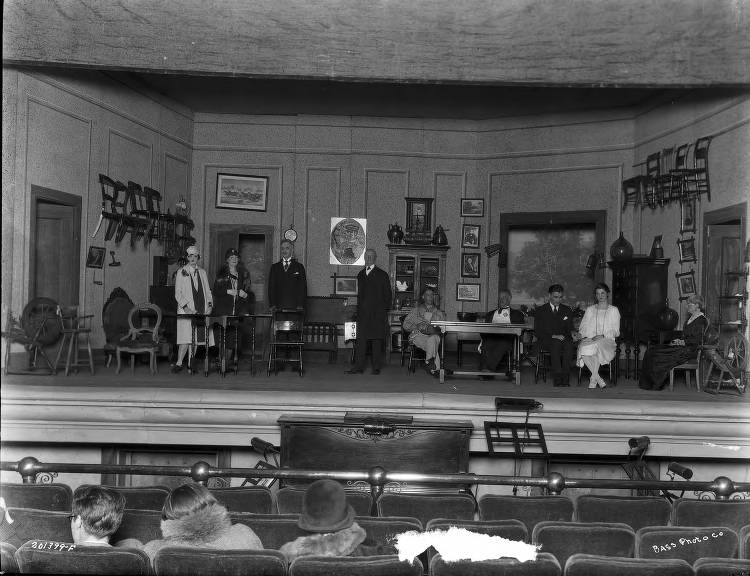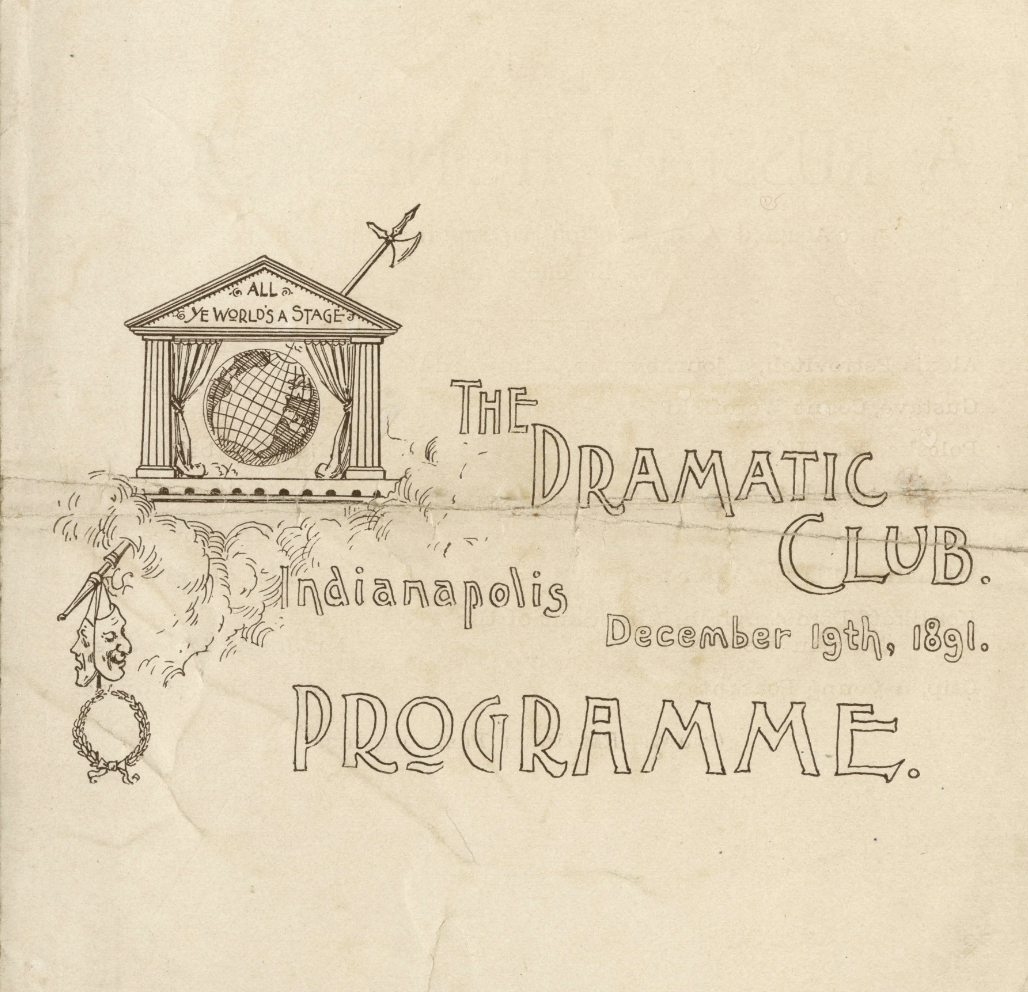In 1889, 25 young women from the city’s leading families formed an amateur theatrical group called the Matinee Club. The all-woman first performance was staged in a residential ballroom at 10th and Delaware streets. By the third play in 1890, men assisted in the production and joined the reorganized Dramatic Club. That year the club also adopted the policy of electing a male president and female vice president. Membership included Indianapolis Pulitzer-Prize-winning author , who designed the group’s logo. In 1890, the club had 149 members and grew to 400 by the early 20th century.

The club held benefit performances for local charities beginning in 1890. Over the years the , Orphans’ Asylum, , and Red Cross received proceeds from Dramatic Club performances. The group’s most ambitious charitable endeavor occurred immediately following World War I when it “adopted” four French children and sent money abroad for their clothing, housing, and education.

Early plays were performed in private homes or at the or . In the 1920s and 1930s, most were staged at the , the Murat Temple (see ), and the Athenaeum, and by the 1950s at . Spring and fall productions are performed at the Hedback Community Theatre, home of the community theater group. Plays are financed solely through club dues.
Social activities, including teas, dinners, and parties, have been a regular part of every play production. In 1950 the club’s annual Christmas Cotillion became a debutante presentation, a tradition that continues on into the 21st century.
In the 2000s, the Dramatic Club hires professional directors to manage the productions and budgets about $10,000 per show.

Help improve this entry
Contribute information, offer corrections, suggest images.
You can also recommend new entries related to this topic.

